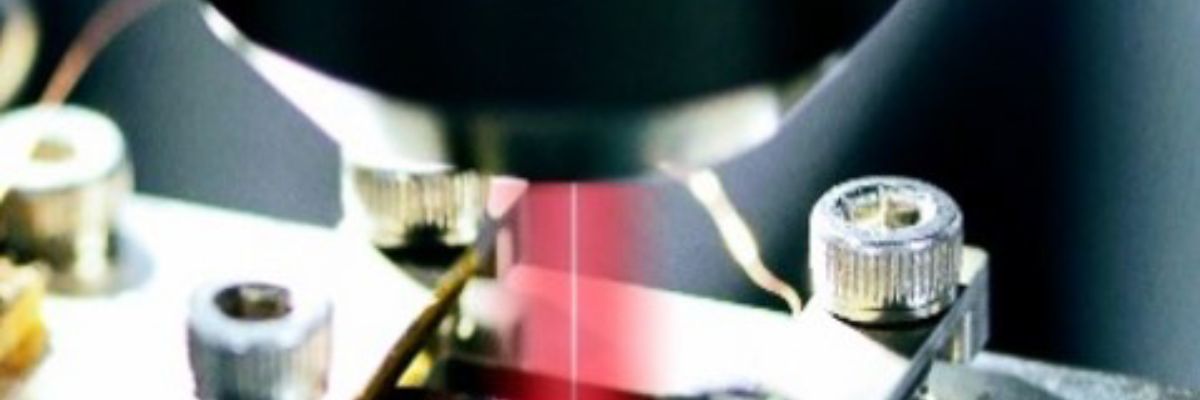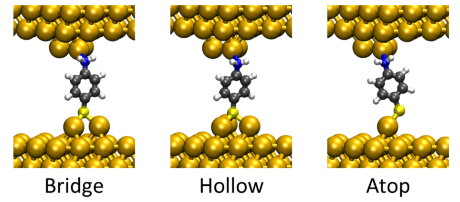
Scientists facilitated the miniaturization of electric circuits
23. 07. 2019
Recently scientists all over the world have been examining components of ever smaller, virtually molecular dimensions. An international team from the Institute of Physics of the Czech Academy of Sciences and the Tokyo Institute of Technology has developed a new method which will contribute to the miniaturization of electric circuits in electronics. They have published their discovery in the prestigious scientific journal Chemical Science.
When examining the properties of molecules potentially useable in miniature circuits, scientists encounter a number of problems. One of them is understanding the configuration of molecule contacts with the metal surfaces of electrodes that influences important properties of junctions, e.g. their conductance. The international team established in collaboration between the Institute of Physics of the Czech Academy of Sciences and the Tokyo Institute of Technology has managed to significantly contribute to addressing this obstacle.
“The new method will enable to check the geometry of the interface between metal electrodes and a molecule. We have thus taken a step towards overcoming one of the main challenges in the realization of stable and reproducible single molecule circuits,” says the leader of the Czech team from the Department of Thin Films and Nanostructures of the Institute of Physics Héctor Vázquez. “The success has been achieved in collaboration with our Japanese colleagues whose measurements we have identified with specific types of bond using numerical simulations. It is the combination of different techniques that forms the basis of the successful new method.”
Simulation of three stable binding configurations of a molecule (from the left– bridge, hollow or atop conformations).
The Golden Electrodes
The linking of the molecule to source and drain electrodes is done via chemical bonds established between linking functional groups on a molecule (linkers) and atoms of golden electrodes. The properties of the junction (including the important conductance) are strongly affected by the details of the bonding geometry. This is particularly relevant for the most commonly used linkers containing sulphur.
This geometry, however, changes quickly in the conditions under which experiments are conducted most frequently – in solution or in ambient conditions, and at room temperature – and cannot be detected easily. The changes in geometry then lead to significant variations (up to 2 orders of magnitude) in conductance of the junction and thus significantly impede the investigation of molecule suitability for the use in microelectronics.
Through the combination of different techniques, the scientists managed to distinguish between three binding configurations of a molecule (see Fig. 2) – bridge, hollow or atop conformations.
The group of Manabu Kiguchi at the Tokyo Institute of Technology performed simultaneous surface enhanced Raman scattering and current-voltage measurements. The group of Héctor Vázquezat the Institute of Physics carried out density functional theory (DFT) based simulations. Variations in conductance and in Raman frequencies characteristic of the molecule measured experimentally were thus matched to specific configurations. By applying a small voltage, the scientists also managed to induce transitions between the different binding sites.
Main picture: Experimental setup where there are two golden electrodes linked by a single “conduction” molecule (a single molecule junction).
Prepared by: Radek Kříček, Institute of Physics of the CAS in cooperation with Department of Media Communication of the Head Office of the CAS
Photo: Institute of Physics of the CAS
Based on article “Identifying the molecular adsorption site of a single molecule junction through combined Raman and conductance studies”, published in Chemical Science, Issue 25, 2019, authors of the study: Satoshi Kaneko, Enrique Montes, Sho Suzuki, Shintaro Fujii, Tomoaki Nishino, Kazuhito Tsukagoshi, Katsuyoshi Ikeda, Hideaki Kano, Hisao Nakamura, Héctor Vázquez and Manabu Kiguchi
Read also
- Evolution, alive and well. What lies at the heart of biodiversity?
- From an evolutionary POV, vision has a great benefit–cost ratio, researcher says
- Badminton buzz: Tournament draws 76 athletes from the Academy’s institutes
- Unique reproductive strategy confirmed in another frog species in Moravia
- Hydrochemist Martin Pivokonský on how to improve water and wastewater treatment
- Involved in groundbreaking research, Ukrainian archeologist now works at the CAS
- The first human presence in Europe securely dated to 1.4 million years ago
- The CAS visited by chess grandmaster and Russian opposition activist Kasparov
- The CAS will support scientists whose research is at risk in their home country
- Unravelling the mystery of biodiversity – with a little help from the fruit fly
The Czech Academy of Sciences (the CAS)
The mission of the CAS
The primary mission of the CAS is to conduct research in a broad spectrum of natural, technical and social sciences as well as humanities. This research aims to advance progress of scientific knowledge at the international level, considering, however, the specific needs of the Czech society and the national culture.
President of the CAS
Prof. Eva Zažímalová has started her second term of office in May 2021. She is a respected scientist, and a Professor of Plant Anatomy and Physiology.
She is also a part of GCSA of the EU.
